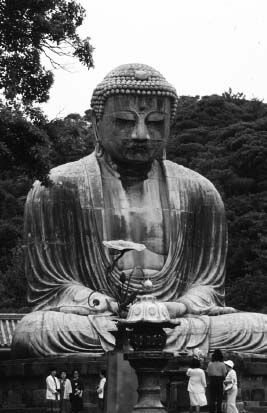BuddhismMembership, Community, Diversity |
What are some of the main features of Buddhism’s relationships to other traditions? |
Buddhism’s most important connections historically have been with Hinduism, out of which it grew, and the major indigenous traditions of the Asian lands to which it spread. Over the centuries Buddhists have therefore interacted primarily with Hindus, Daoists, Confucians, and adherents of Shinto. An earlier question outlined crucial features of Buddhism’s relationship to Hinduism. Here are some features of Buddhism’s conceptual connections with the other traditions.
China’s ancient Daoist tradition made room for the Buddha among the swelling ranks of its deities, even claiming that foundational figure Lao Zi had himself become a Buddha. Dharma, some scholars argued, was the Buddhist analogy to the concept of the Way or Dao. They suggested further parallels between the Buddhist Arhat and the Daoist Immortal, and between nirvana and the concept of non-action. Confucian tradition also found ways of accommodating to the newcomer. Some scholars saw in Buddhist ethics a parallel to Confucian filial piety, even though Buddhist elevation of celibate monasticism seemed quite irreconcilable with the Confucian emphasis on family life. To Buddhism’s “Five Precepts” some likened Confucianism’s “Five Constant Virtues.” When Buddhist missionaries brought the new teaching to Japan, the Buddha met the kami (“high beings”) of the indigenous tradition called Shinto.
As was so often the case in China and elsewhere, Buddhism’s ability to survive and grow in its new environment depended a great deal on royal patronage. Imperial support gave impetus to various Buddhist-Shinto accommodations. Shinto’s Sun Goddess, Amaterasu, became a counterpart to the Buddha of Infinite Light, Vairochana. Hachiman, Shinto deity of war, dressed as a Buddhist monk and became the guardian of the great Buddha. And in Mahayana teaching’s multiple Buddhas and Bodhisattvas some saw parallels to Shinto’s countless kami. Representatives of various Buddhist denominations have continued active dialogue with other traditions, especially through the monastic connection.

Great bronze Amida Buddha, twelfth century, Kamakura, Japan. The statue is nearly forty feet tall and was once housed in a wooden temple structure. Visitors can ascend stairs inside and look out.
